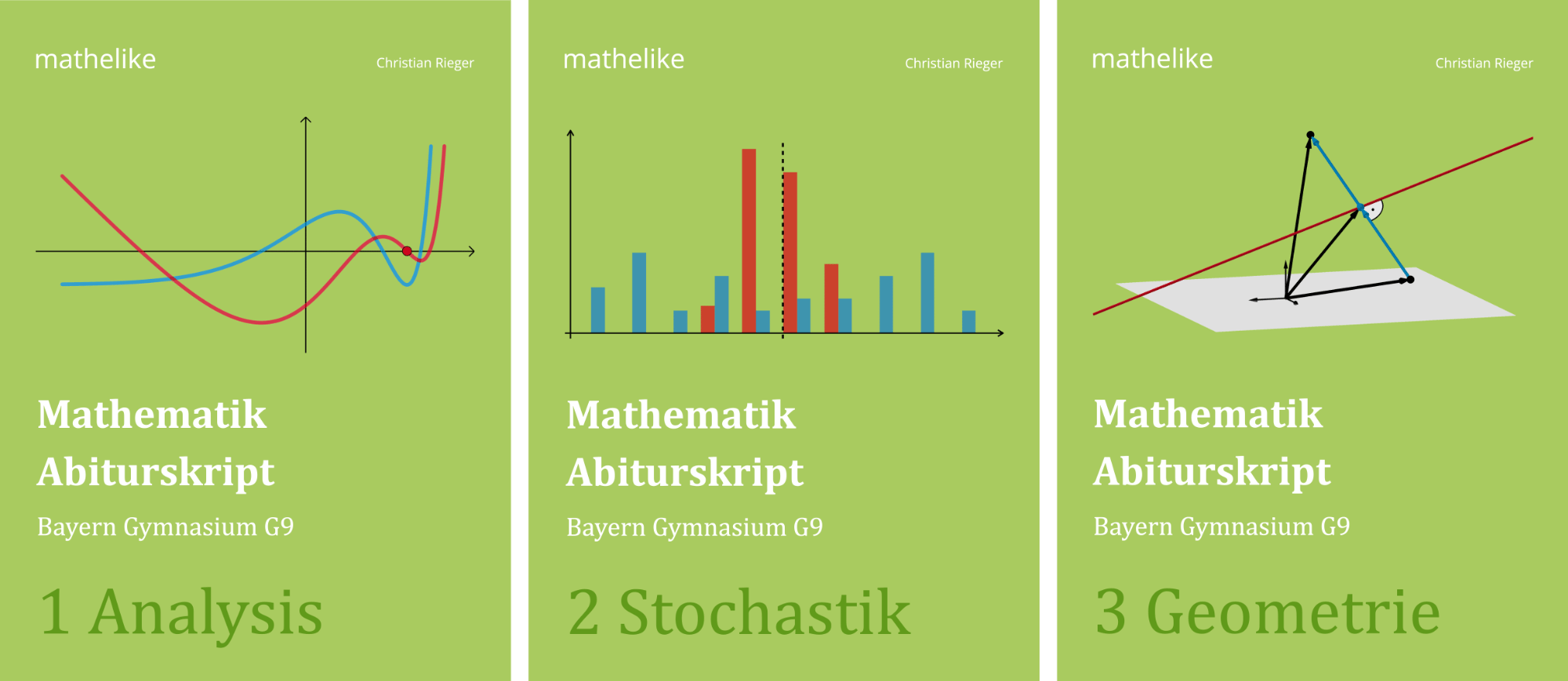Bestimmen Sie einen Term derjenigen Stammfunktion \(F\) von \(f\), deren Graph durch den Punkt \((-1|5)\) verläuft.
(3 BE)
Lösung zu Teilaufgabe 1b
\[f(x) = 8x^3 + 3x; \; D_f = \mathbb R\]
Zunächst wird die Menge aller Stammfunktionen \(F_C = \displaystyle\int f(x)dx\) von \(f\) bestimmt.
Wichtige unbestimmte Integrale (\(C \in \mathbb R\), vgl. Merkhilfe)
\[\int x^{r} dx = \frac{x^{r + 1}}{r + 1} + C \quad (r \neq - 1)\]
\[\int \frac{1}{x}\,dx = \ln{\vert x \vert} + C\]
\[\int \sin{x} \, dx = -\cos{x} + C\]
\[\int \cos{x} \, dx = \sin{x} + C\]
\[\int e^{x} dx = e^{x} + C\]
\[\int \ln{x}\, dx = -x + x \cdot \ln{x} + C\]
\[\int \frac{f'(x)}{f(x)} dx = \ln{\vert f(x) \vert} + C\]
\[\int f'(x) \cdot e^{f(x)} dx = e^{f(x)} + C\]
\(\displaystyle \int f(ax + b) \, dx = \frac{1}{a} \cdot F(ax + b) + C\), wobei \(F\) eine Stammfunktion von \(f\) ist.
Es gilt die Faktorregel und die Summenregel:
\(\displaystyle \int c \cdot f(x)\,dx = c \cdot \int f(x)\,dx\) mit \(c \in \mathbb R\)
\( \displaystyle \int \left[f(x) \pm g(x) \right] dx = \int f(x)\,dx \pm \int g(x)\,dx\)
Mithilfe des unbestimmten Integrals \(\displaystyle \int \textcolor{#0087c1}{x^{r}} dx = \textcolor{#0087c1}{\frac{x^{r + 1}}{r + 1}} + C \quad (r \neq - 1)\) sowie der Faktor- und der Summenregel ergibt sich:
\[\begin{align*}F_C(x) &= \int f(x)dx \\[0.8em] &= \int (\textcolor{#e9b509}{8}\textcolor{#0087c1}{x^3} \textcolor{#cc071e}{+} \textcolor{#e9b509}{3}\textcolor{#0087c1}{x})dx \\[0.8em] &= \textcolor{#e9b509}{8} \cdot \textcolor{#0087c1}{\frac{x^{3 + 1}}{3 + 1}} \textcolor{#cc071e}{+} \textcolor{#e9b509}{3} \cdot \textcolor{#0087c1}{\frac{x^{1+1}}{1+1}} + C \\[0.8em] &= 2x^4 + 1{,}5x^2 + C\end{align*}\]
Die Bedingung „... deren Graph durch den Punkt \((\textcolor{#89ba17}{-1}|\textcolor{#89ba17}{5})\) verläuft." legt den Wert der Integrationskonstante \(C\) fest.
\[\begin{align*} F_C(\textcolor{#89ba17}{-1}) &= \textcolor{#89ba17}{5} \\[0.8em] 2\cdot (\textcolor{#89ba17}{-1})^4 + 1{,}5 \cdot (\textcolor{#89ba17}{-1})^2 + C &= \textcolor{#89ba17}{5} \\[0.8em] 3{,}5 + C &= 5 &&| - 3{,}5 \\[0.8em] C &= 1{,}5\end{align*}\]
\[\Rightarrow F_{1{,}5}(x) = 2x^4 + 1{,}5x^2 + 1{,}5\]


